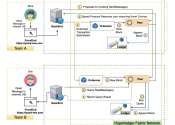Cloud services without servers: What's behind it
A new generation of cloud services is on the rise. It is based on the paradigm of "serverless computing," which is an active research topic at the Institute for Computer Science in Würzburg.
Sep 20, 2023
0
14









